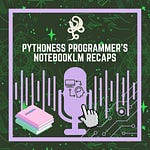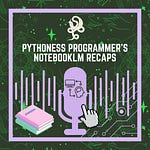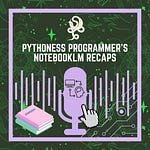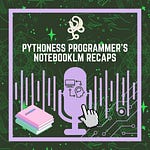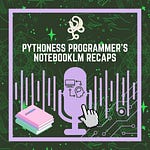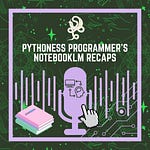This week, we’re connecting the dots between three seemingly unrelated deep-dive reports—AI code quality, autonomous agent design, and the lived experience of neurodivergence—to reveal a universal truth: context is the secret ingredient for trust, performance, and well-being.
What’s inside this episode:
AI Code Quality: The Context Conundrum
We unpack findings from the 2025 State of AI Code Quality Report (Qodo), where developer confidence is the new gold standard. Despite widespread adoption—82% of developers use AI tools weekly—trust remains elusive. Why? Because even technically correct code falls flat if it doesn’t fit the team’s style, standards, and project context. The report highlights how context gaps and “hallucinations” (errors or misleading suggestions) erode confidence, with only 3.8% of teams living in that coveted high-trust, low-error sweet spot. For the full report and detailed stats, check the source referenced in this episode.Building Better Agents: Why Guardrails Matter
Next, we dive into “A Practical Guide to Building Agents,” (Pdf, OpenAI) which breaks down the anatomy of autonomous AI agents—model, tools, and instructions—and why robust guardrails are non-negotiable. From relevance and safety classifiers to human-in-the-loop oversight, the guide emphasizes that trust in agents is built not just on autonomy, but on persistent learning and context awareness. Curious about orchestration patterns or how to keep your agents from running amok? The guide has you covered—see our source list for details.Neurodivergence and Environmental Fit: Lessons from Human Systems
Finally, we explore “Autism plus Chronic Full Body Mind Health Concerns,” (Substack, Linsdey Mackereth) a report that reframes neurodivergence as difference, not deficit. The document details how chronic stress, burnout, and health challenges often stem from environmental mismatch—when neurodivergent wiring meets systems designed for neurotypical brains. The parallels to AI are striking: just as code that doesn’t fit is rejected, humans suffer when their environments don’t accommodate their needs. For more on this somatic-technical connection, refer to the full source.
Key Takeaways:
Context is King:
Whether you’re writing code, building agents, or supporting neurodivergent folks, alignment with the environment is the linchpin of trust and function.Mismatch Drains Energy:
For AI, context gaps slow adoption and erode ROI. For humans, persistent mismatch leads to burnout, chronic illness, and identity struggles.Guardrails and Support Structures:
In tech, that means safety features and oversight. In life, it means accommodations and supportive environments—structures that let systems (and people) thrive.Design for Fit, Not Force:
Sustainable solutions come from understanding and aligning with real needs, not forcing square pegs into round holes.
Reflection Prompt:
Where in your work, team, or life do you see hidden context gaps or environmental mismatches? What new “guardrails” or support structures might help your systems—digital or human—thrive with less friction?
Want more?
Catch up on last week’s episode for our take on compression, layoffs, and the future of sustainable tech work. Subscribe for more deep dives that blend code, cognition, and compassion.







